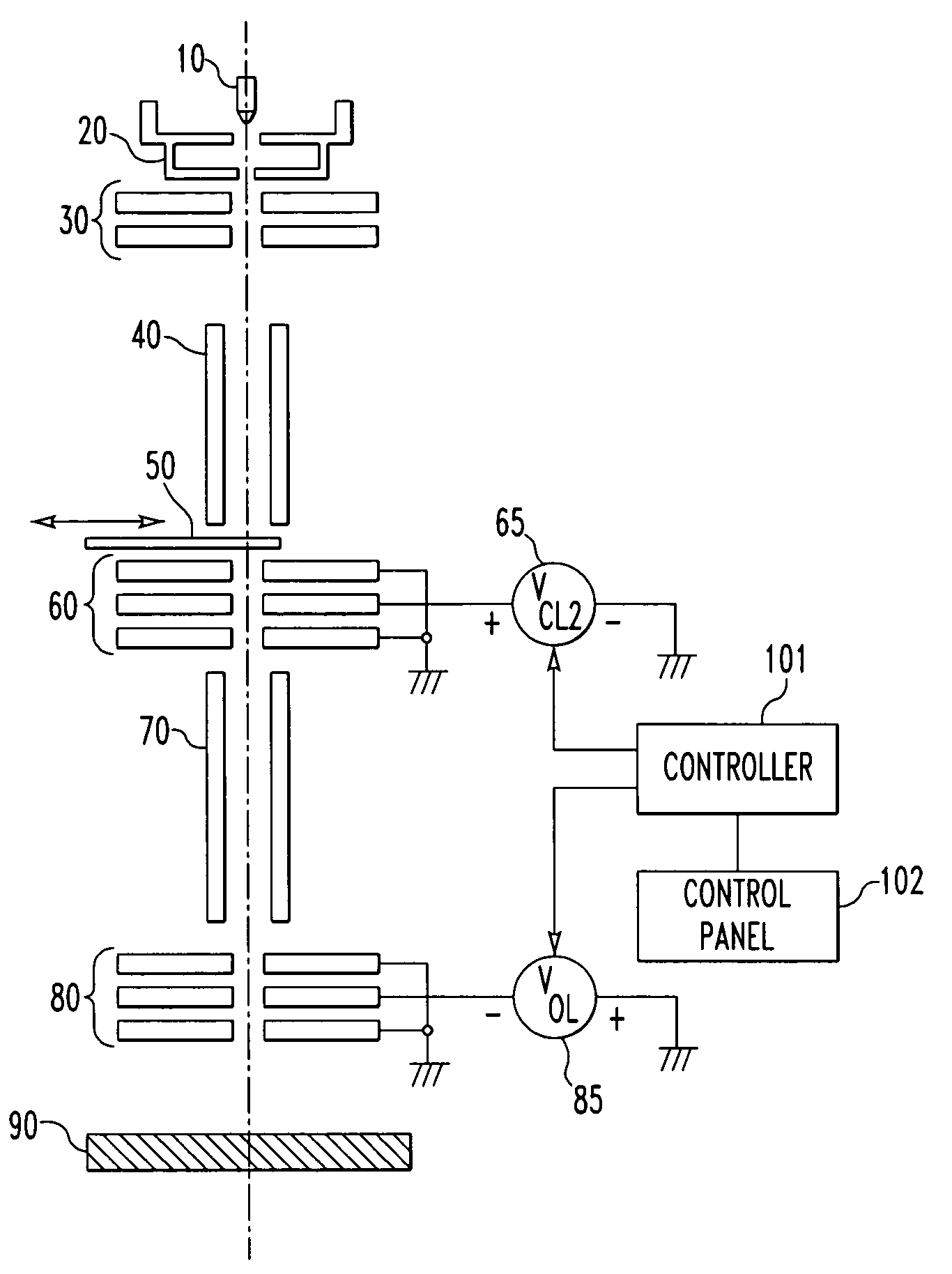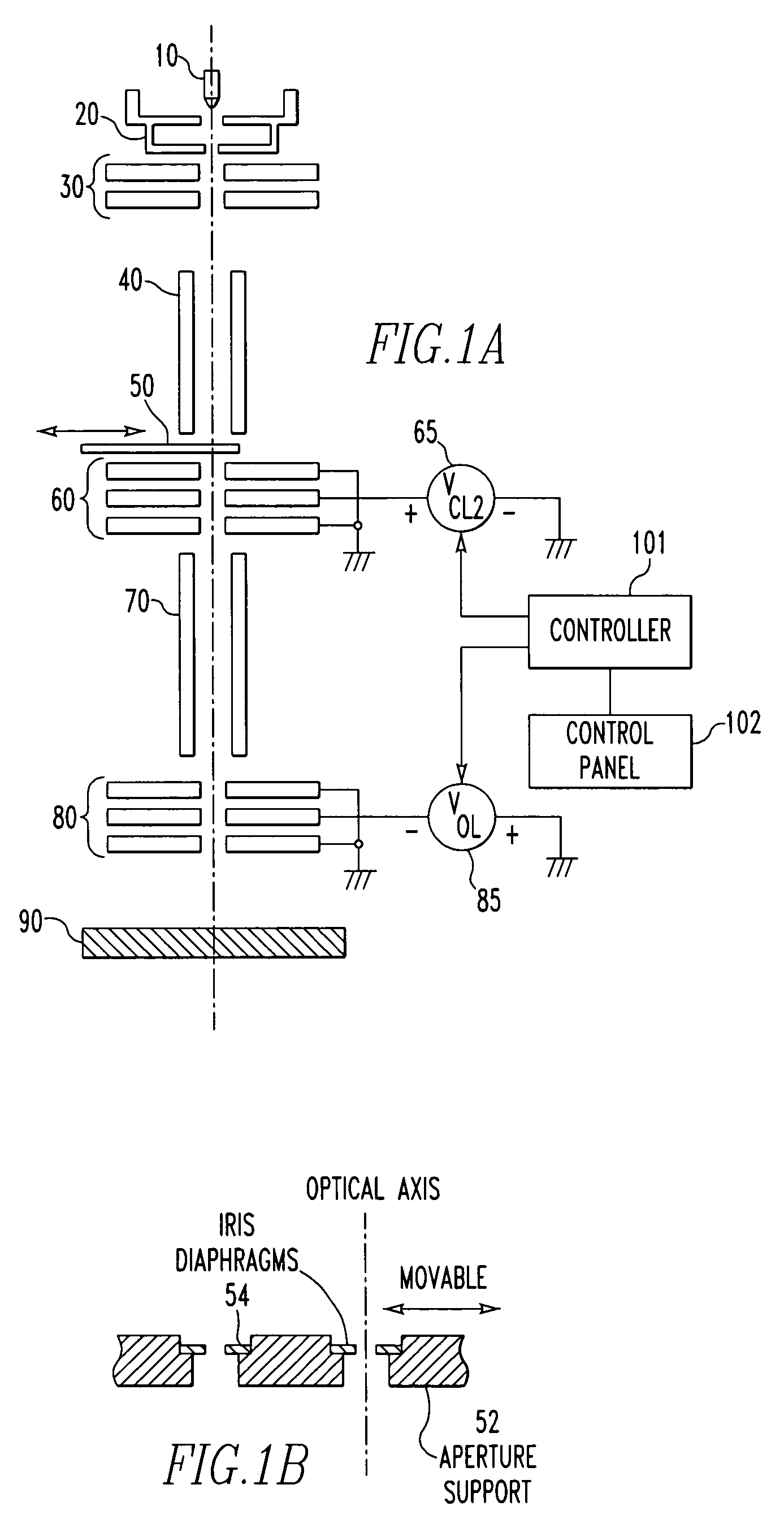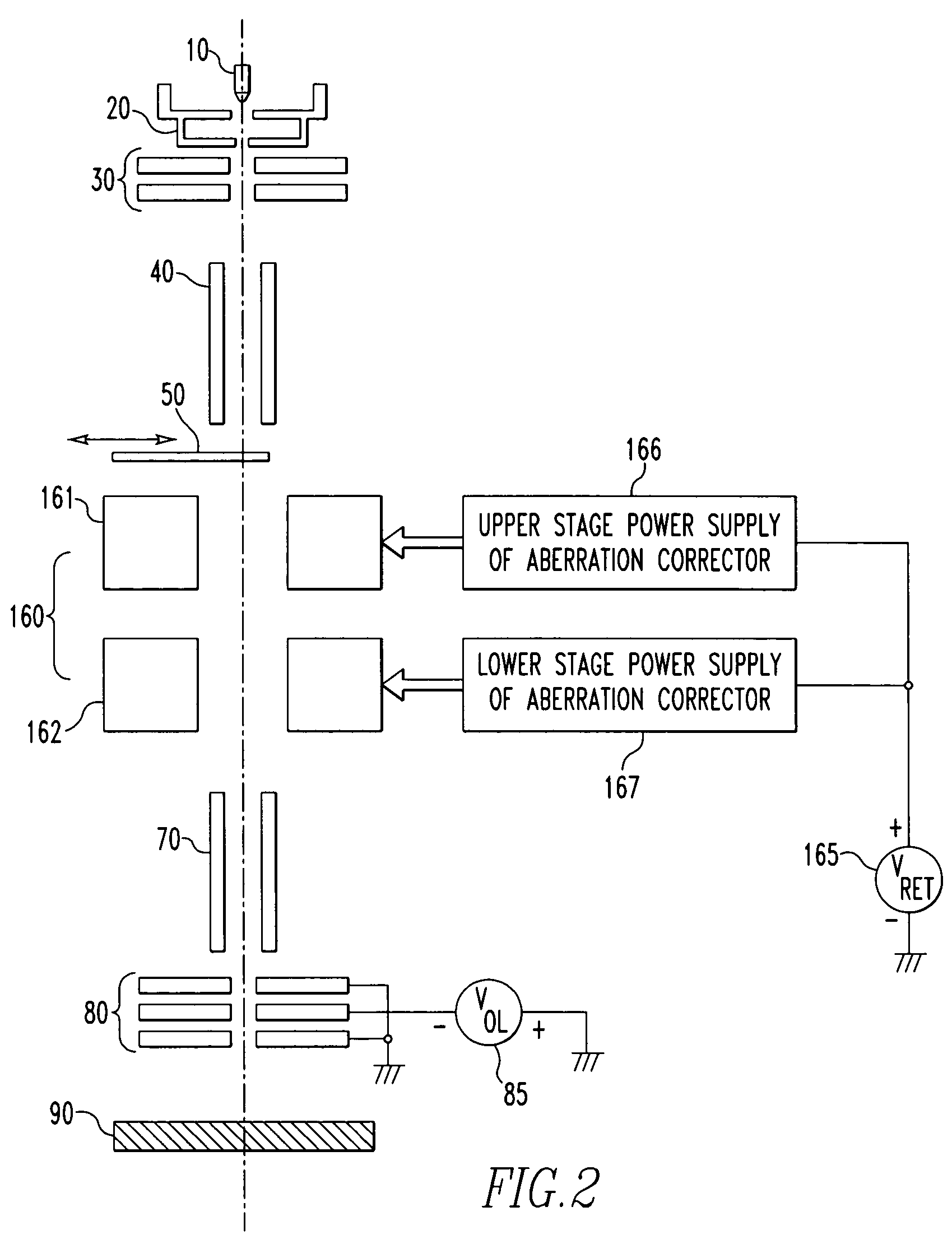Focused ion beam system
a technology beams, applied in the field of focused ion beams, can solve the problems of low efficiency, low efficiency, and inability to perform high-contrast imaging, and achieve the effect of sacrificing the life of the system
- Summary
- Abstract
- Description
- Claims
- Application Information
AI Technical Summary
Benefits of technology
Problems solved by technology
Method used
Image
Examples
first embodiment
[0064]The mechanical and electrical configurations of the whole of a focused ion beam (FIB) system according to a first embodiment of the present invention is first described by referring to FIGS. 1A and 1B. In FIG. 1A, fundamental members for holding various components, such as microscope column and frame, are omitted. The illustrated FIB system is of the three-lens type.
[0065]Referring to FIG. 1A, an emitter 10 forms a main portion of an ion source (e.g., a liquid metal ion source (LMIS) or gas phase ion source (GFIS)) for producing ions. An extraction electrode 20 extracts an ion beam from the emitter 10. A condenser lens (first condenser lens) 30 controls the angular aperture of the extracted ion beam. A beam aligner 40 deflects the ion beam, whose angular aperture has been controlled by the condenser lens 30, such as for alignment of the beam. A current-limiting aperture 50 takes out an ion beam having a certain angle of radiation from the ion beam whose angular aperture has be...
embodiments
[0092]Most of the kinetic energies of charged ions produced by sputtering are considerably lower as compared with the accelerating voltage. The objective lens is of the acceleration type, while the angular aperture control lens is of the deceleration type. Therefore, charged particles arising from the edge of the current-limiting aperture cannot pass through the angular aperture control lens acting to decelerate ions. Consequently, the background current Ibck contained in the whole beam current Iexp of the ion beam decreases. This enables high-contrast, high-resolution imaging which should be expected when an acceleration-type objective lens is used. This has been confirmed also experimentally. Furthermore, the current-limiting aperture 50 has normal thickness and so no problem occurs in terms of life. That is, it has been confirmed that a FIB system capable of making the best use of the theoretical advantages of the three-lens type using an acceleration-type objective lens can be a...
second embodiment
[0094]The mechanical and electrical configurations of the whole FIB system according to the second embodiment is described by first referring to FIG. 2. In FIG. 2, fundamental members for holding various components, such as microscope column, and pedestal are omitted.
[0095]Shown in FIG. 2 is a FIB system of the three-lens type having a condenser lens, an aberration corrector, and an objective lens. In this case, the aberration corrector having lens components is also regarded as a lens.
[0096]An emitter 10 forms a main portion of an ion source. An extraction electrode 20 extracts an ion beam from the emitter 10. A condenser lens (first condenser lens) 30 controls the angular aperture of the extracted beam. A beam aligner 40 deflects the ion beam whose angular aperture has been controlled by the condenser lens 30, such as for alignment of the beam. A current-limiting aperture 50 takes out an ion beam having a certain angle of radiation from the ion beam whose angular aperture has been...
PUM
 Login to View More
Login to View More Abstract
Description
Claims
Application Information
 Login to View More
Login to View More - R&D
- Intellectual Property
- Life Sciences
- Materials
- Tech Scout
- Unparalleled Data Quality
- Higher Quality Content
- 60% Fewer Hallucinations
Browse by: Latest US Patents, China's latest patents, Technical Efficacy Thesaurus, Application Domain, Technology Topic, Popular Technical Reports.
© 2025 PatSnap. All rights reserved.Legal|Privacy policy|Modern Slavery Act Transparency Statement|Sitemap|About US| Contact US: help@patsnap.com



